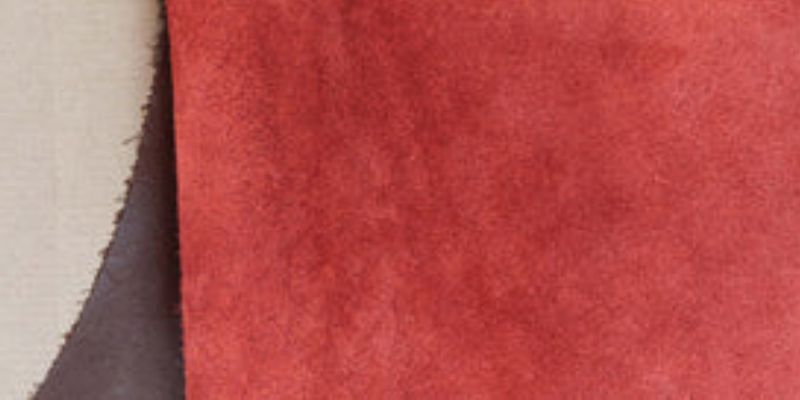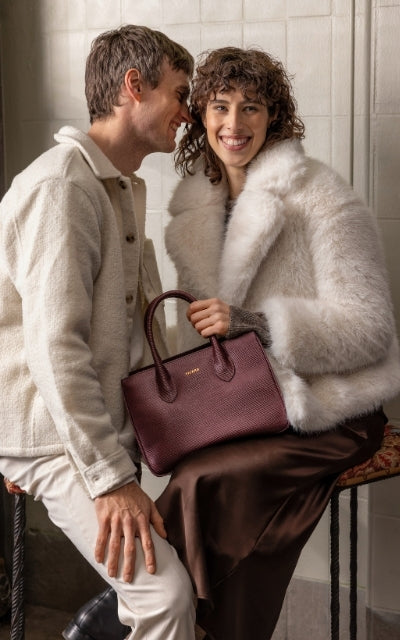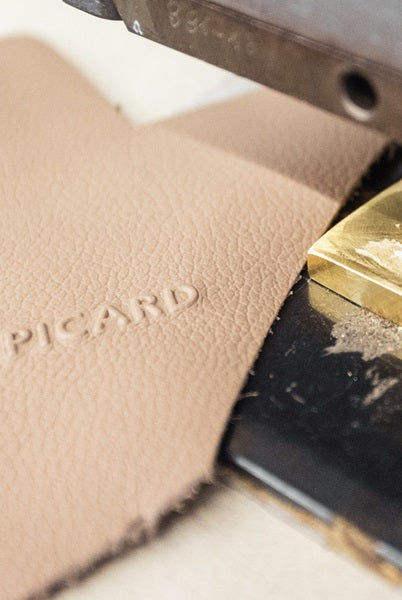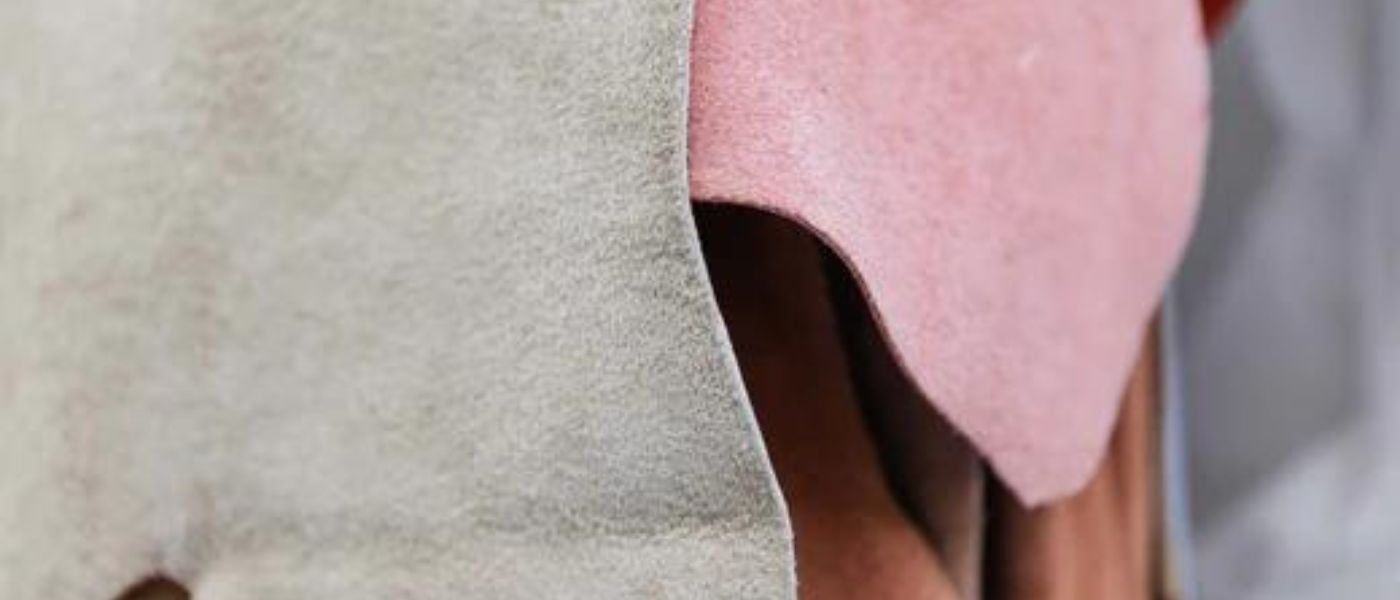You have chosen the beautiful suede handbag, it was love at first sight. Yes, and now you are thinking about how best to care for this velvety, beautiful leather. Haven't we always heard that caring for suede is difficult? Is this leather really suede? Or is it another kind of rough leather ?
This article will answer your questions and also give you some valuable care tips .
Where does suede actually come from?
The name suede comes from the leather of animals that live in the wild . These include deer, elk, reindeer and many other wild animals. Suede is a rather rare raw material because the animals are not slaughtered for the material, but for consumption and the leather is then obtained as a by-product.
In fact, this applies to all types of leather except exotic leather from animals such as crocodiles or snakes.

What properties does suede have?
Apart from the velvety surface and the charm that suede exudes, it has other interesting properties . Did you know that it is often worn in summer, for example?
Yes, you heard right, suede espadrilles are very popular in summer because they provide a pleasant climate for your feet. You just have to be careful when it rains because suede is not waterproof.
The suede also has the following properties:
- soft/flowing
- breathable
- stretchable
- durable
Other types of suede
Suede is a type of rough leather, which is a collective term for types of leather whose surface is sanded or split. These three types of leather differ in their origin and manufacturing process.
But don't worry, suede is not rough , quite the opposite, it is a very soft leather, you can find out more about the different types of suede here.
Nubuck leather
For the production of nubuck leather, mainly cow or calf hides are used, these hides are sanded on the grain side . The grain side is the side on which the animal's hair was.
Sanding creates a fine pile, which makes the nubuck leather so velvety. Even if the leather is sanded, it does not lose any of its strength or density .
Compared to suede, nubuck is more durable . In addition to the velvety feel, the two types of suede have other things in common: they are very breathable , a little more susceptible to dirt and are only partially sensitive to UV rays. So you shouldn't leave your nubuck leather to bathe in the sun.
Expert tip: Water is not suede's best friend either, but a good waterproofing treatment protects and cares for the leather. Small scratches or scrapes can be easily brushed out with a nubuck leather brush.

Suede
As with nubuck leather, suede is mainly made from cowhide or calfskin. The two types of leather do not differ in their origin (from which animal), but in how they are made.
As you know, nubuck is sanded from the grain side, while suede is a split leather and is sanded from two sides. The so-called meat split is used for production. Since cowhide is very thick and strong, it can be split into different splits.
Suede is also very breathable , but does not like water, dirt and UV rays. Suede is not as durable as nubuck leather because the surface density is lower due to the sanding process on both sides.
You can also remove small scratches or scuffs in no time at all with a suede brush.
What is the difference between smooth leather and suede?
The main difference to suede is that it is difficult for a layperson to notice, as the surface and feel are hardly different and they are both considered rough leather.
But what is the difference? It is actually quite simple: suede comes from animals that live in the wild , while velour leather is the processed, uncoated back of a leather hide. This can come from cowhide or other types of leather.
Suede is often sold as suede, as this is rarer and therefore more expensive. When buying, always pay attention to what the material description actually says and do not rely solely on the statements of the sales staff.
Caring for suede: How to do it right
Caring for suede is important if you want to protect your rough leather in the long term. Would you like to know how to clean suede or remove grease stains from suede? Then you've come to the right place. Cleaning suede is different from cleaning other types of leather because it has an open-pored structure and a velvety surface.
Suede should only be greased with special suede grease and only from the outside. You should definitely avoid leather creams and leather wax, but also normal leather greases , unlike when caring for conventional leather goods.
To be on the safe side, you can also use a suede care spray. You can then roughen up the leather again with a suede brush.
After you have refreshed the suede, you can care for and protect it with a waterproofing product .
What is the best way to clean suede?
The basics of cleaning suede are to regularly remove dust and dirt . The best way to do this is with a suede brush or a dry cloth. As suede is an open-pored leather, like nubuck and suede, moisture should be avoided when cleaning.
To clean and/or if you want to freshen up the color of the suede, you can even use household remedies . But if you prefer to play it safe, then use a special cleaner for suede , which we definitely recommend for water stains.
- Remove dust and dirt with a suede brush or cotton cloth.
- Treat grease and oil stains with flour, baking powder or baby powder
- Spread the powder generously on the stain, let it work, then gently brush or tap the remaining powder off the leather
- Care for the suede with a waterproofing spray or wax spray specifically for suede, which you can buy from specialist retailers. Please never use leather grease for rough leather (suede, nubuck and suede), as the grease sticks to the surface and makes it smooth.

What should you consider when dyeing suede?
Over time, your suede may fade a little if it is exposed to the sun for long periods of time. But re-dyeing or refreshing the color is relatively easy.
To refresh the colour, you can buy a suede colour spray from a specialist retailer or online that has the same colour as your suede.
Before you start with the refresh, you should clean the suede thoroughly . Then proceed to the color refresh as indicated on the product. It is best to test the product on an inconspicuous area first.
Once the paint has dried, you can protect and care for the suede with a waterproofing spray.
Conclusion
Suede has its own characteristics; it is timeless, beautiful and has many good properties. Suede's breathability and soft, pleasant feel on the skin are particularly appealing.
The open-pored suede is not the best friend of sun and water, but with the right leather care and waterproofing, any leather can last a lifetime.
FAQ
How long does suede last?
If you care for and protect the suede well, it can last you a lifetime.
Make sure you clean and care for it regularly, do not leave it in the sun for hours every day and do not store it in damp rooms.
Impregnate it regularly to protect it from dirt and especially water.
Is suede more expensive?
Yes, because the number of animals kept for suede production is much lower than the number of animals used for smooth leather production, for example. The amount of waste from the leather should not be underestimated either.
This is because the skins of animals that live in the wild (enclosures) can have injuries that cannot be used when cutting the leather.
Can you treat suede shoes with shoe polish?
No, please do not use shoe polish, as the fats and oils it contains will stick to the suede and destroy the velvety surface. The best way to remove light dirt is with a suede brush.








